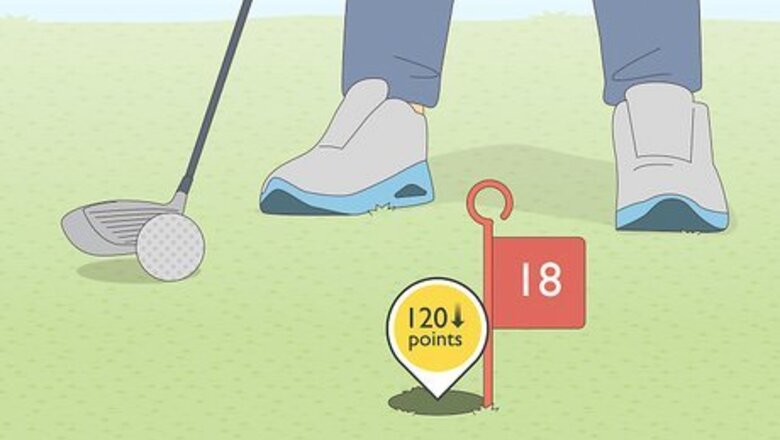
views
- A good golf score is generally around 90-100 points if you’re an amateur player, and 120 points if you’re a beginner, on an 18 hole, par 72 course.
- Professional golfers typically consider good scores between 69-70 points.
- Subtract your handicap from your gross score to determine how your score stacks up to players with different skill levels.
Good Golf Scores Based on Skill Level
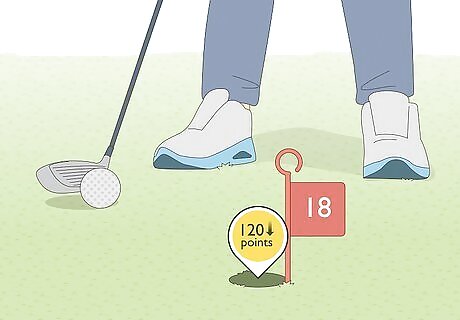
Beginners A good score for beginners is below 120 points on an 18 hole course. If it’s your first time picking up a golf club, a good score to you is different from what amateur players and professionals expect. Hitting the ball 120 times over an 18 hole, or par 72, course is pretty good for a beginner. If you want to feel really impressive, aim for 115 strokes or fewer! On a 9 hole course, or par 36, a good score is 60 points and under. Par is how many strokes a player should have to make to get the ball into a given hole. If a hole is par 4, this means it should take you 4 swings to make the hole. You can be under par, meaning you made fewer strokes than par to get the ball in the hole, or be over par, taking more swings than par. An 18 hole course is usually par 72, which means that the pars for each hole add up to 72. So ideally, a golfer will only make 72 strokes throughout the entire course.
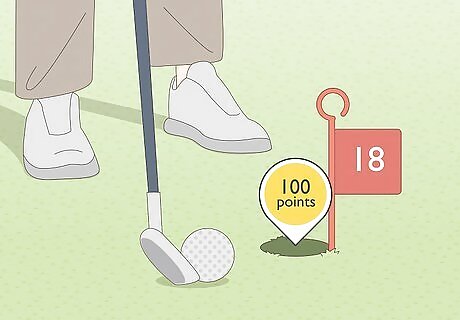
Amateurs A good score for regular golf players is 100 points on an 18 hole course. On average, the majority of golfers score more than 90 points. This typically means that they score bogeys for each hole, or hit the ball 1 more time than par. So, if you hit 100 or below you’re doing really well! On a 9 hole course, a good score is 45 points.
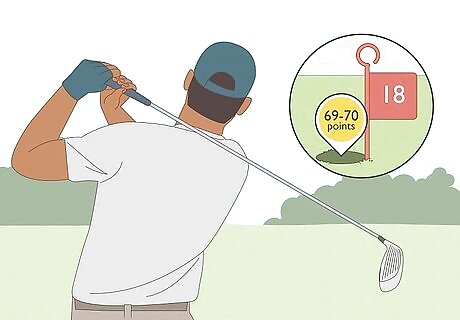
Professional golfers Most pro golfers average a score of 69-70 points on an 18 hole course. Of course, professional golfers have different expectations for a good score. They usually make 1-2 strokes under par for each hole, often leaving them with scores under 70 points. While 9 hole courses aren’t as common in professional tournaments, pro golfers typically make under 40 strokes. The lowest score recorded by the Professional Golfers’ Association of America (PGA) is 58 points, which was made by Jim Furyk in 2016. There are only 2 official instances of golfers scoring 55 points, which was made by Rhein Gibson in 2012 and Alexander Hughes in 2020.
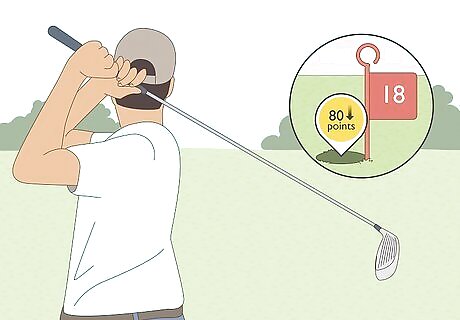
High Schoolers College recruiters typically look for scores under 80 points for high schoolers, though it depends on the student’s gender. To play golf in college at a Division 1 school, which are the schools that have the best golfing programs, recruiters look for women’s scores between 70 to 80 points. For men, a Division 1 school wants to see scores 72 points and lower. Division 2 scores for women are between 85 and 75 points, while Division 3 scores are around 95 to 80 points. Division 2 scores for men are usually under 74 points, while Division 3 scores are below 76 points.
Accounting For Handicaps
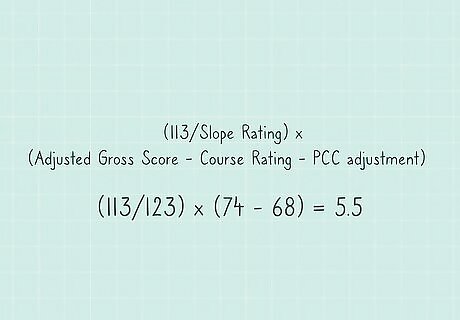
Calculate your Handicap Index after you have at least 3 18 hole scores. The Handicap Index is a number that represents a player’s golfing ability, or their average score over par. To calculate your handicap, adjust the scores from 3 to 20 of your most recent games for the maximum strokes per hole. This gives you an adjusted gross score for each game. Then, use the formula (113 / Slope Rating) x (Adjusted Gross Score - Course Rating - PCC adjustment) to get each game’s score differential. Take your 3 to 8 best differentials and average them to get your index. For example, imagine your adjusted gross score is 74, the course rating is 68, the slope rating is 123, and there is no playing condition calculation (PCC) adjustment. Simply add these numbers to the score differential formula: (113/123) x (74 - 68) = 5.5. Say your best score differentials are 5.5, 6, and 6.8. Simply add them up and divide by the number of scores to get your Handicap Index: (5.5 + 6 + 6.8)/3 = 6.1. So, your handicap is 6.1.
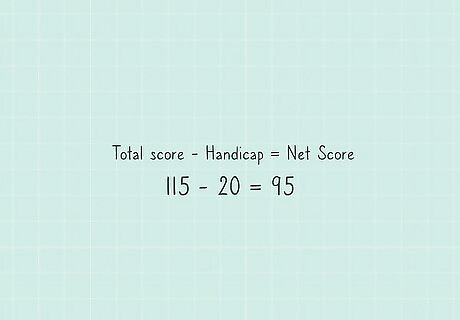
Find your net score by subtracting your handicap from your total score. Your total score doesn’t tell the whole story because it doesn’t account for your handicap. When you play with people who have varied skill levels, you subtract your handicap from your total score to make the game more fair. For example, if you scored 115 points and your handicap is 20, your net score is 95. So, your score is actually on average with most amateur players! Beginner golfers typically have high handicap indexes over 20, while average players have indexes between 11 to 19. Professional golfers and avid players typically have handicaps between 0 to 10.
What is a bad golf score?
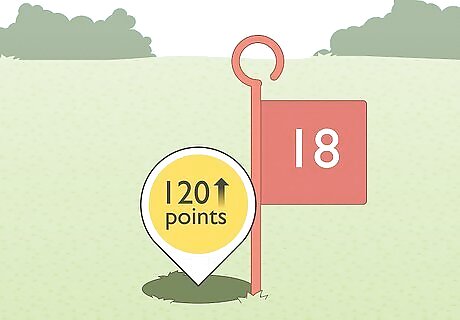
Generally, a bad score is over 120 points on an 18 hole course. What you consider bad really depends on your typical scores and your experience. That being said, for most players, finishing with a score of 121 or greater is pretty high. This just means you have room to improve your game, so get onto the golf course to get your form down, find a good club, and practice, practice, practice! On a 9 hole course, a bad score for most players is 60 points or higher. For example, if you usually score around 80 points but make 100 strokes one weekend, you might think that’s a bad score. To the average golfer though, 100 points is pretty good.
Improving Your Golf Scores
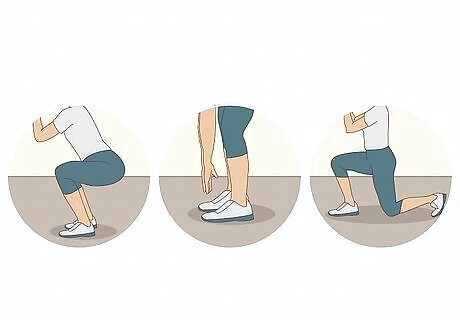
Warm up with squats, toe touches, and lunges before you play. Start by doing 10 squats, standing with your feet shoulder-length apart and bending your knees like you’re sitting in a chair. Then, do 10 toe touches, bending over your waist to touch your toes as you keep your knees straight. Finish off by doing 10 reverse lunges, then practice quick swings on your left and right sides.
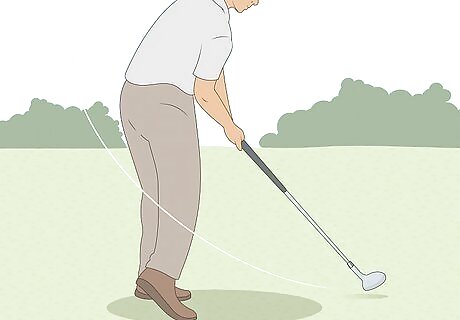
Work on your swing to improve your speed and distance. If you’re a beginner, focus on the performance of your swing over how it looks. Plant your feet firmly on the ground and bring your dominant arm to your hip. Hold the club with your fingers instead of your palms, keeping your grip light. Then, rotate your hips and torso towards your back to bring your arms up for the backswing, then rotate them forward as you make your downswing.
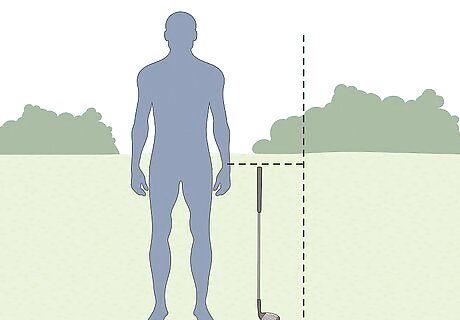
Get fitted for clubs that suit your height, body, and play style. The right-sized clubs for you can help improve your score. To find your perfect fit, measure your height and the distance from the floor to your wrist when your hands are at your sides. Then, go to your local golf or sports store and ask to be fitted. An employee will analyze your swing and use your measurements to select the clubs that work best for your stature and swing.

Practice every chance you get. Yes, it’s obvious, but you have to play more to get better. Practicing trains your muscles how to move, stretch, and bend, which helps you feel more relaxed and confident in your swings. Go to the golf course or driving range on the weekends, or simply practice your swings and putts in your yard after work. Make sure to spend extra time on the shots and techniques that you want to work on.




















Comments
0 comment